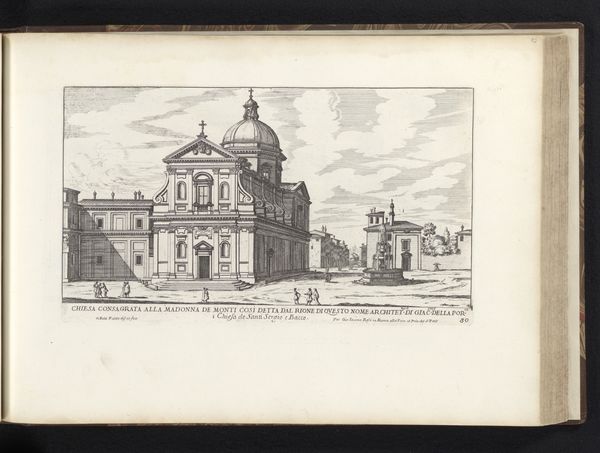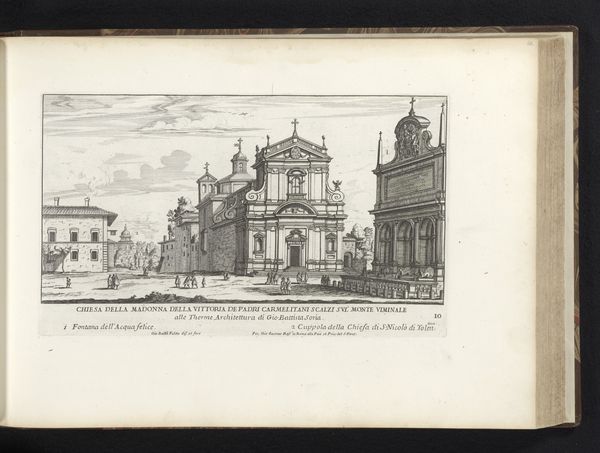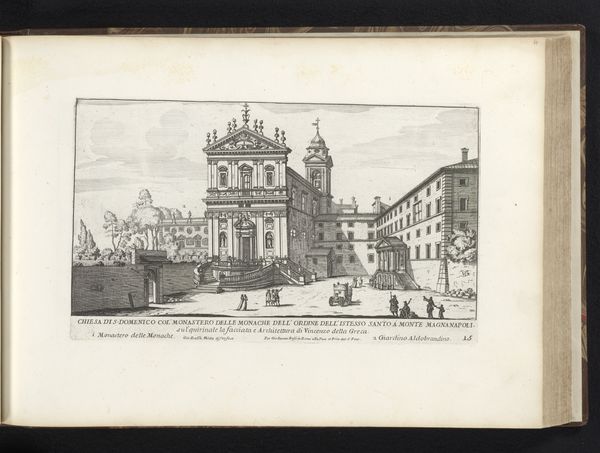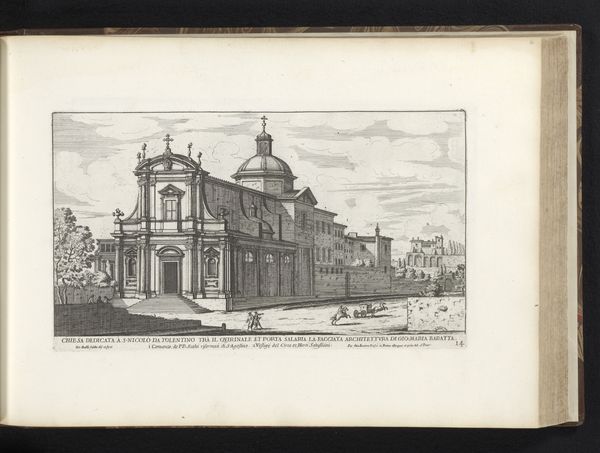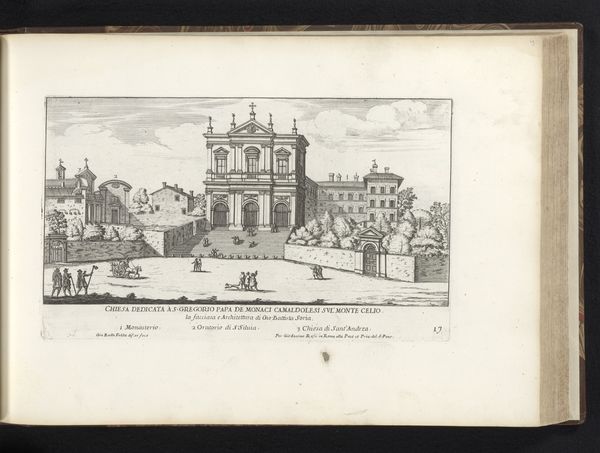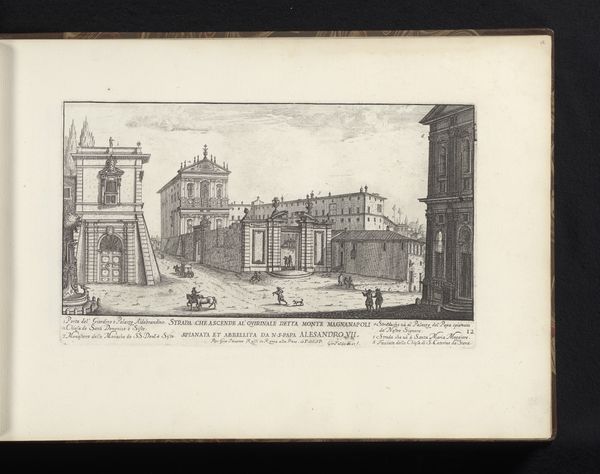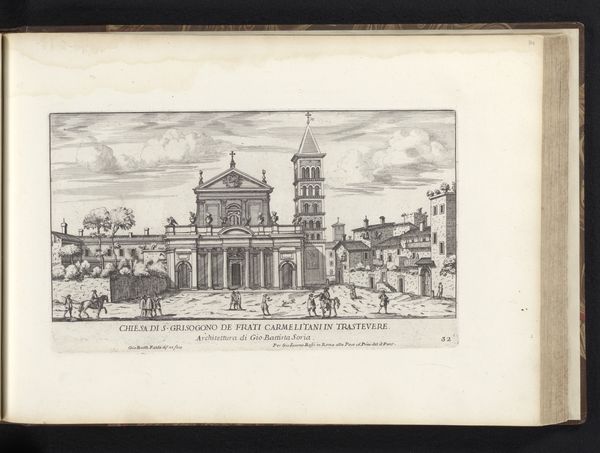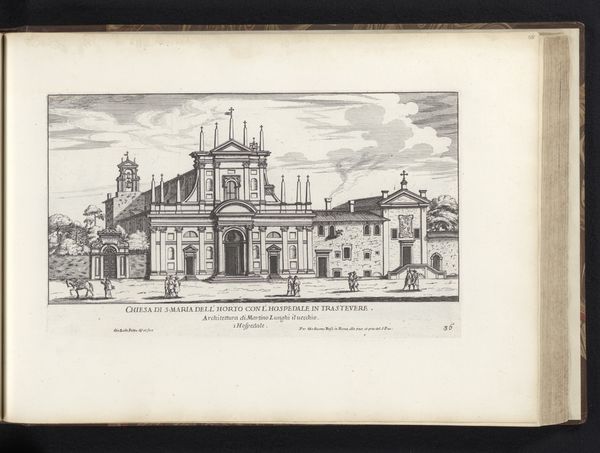
etching, engraving, architecture
#
aged paper
#
toned paper
#
baroque
#
etching
#
old engraving style
#
sketch book
#
personal sketchbook
#
pen-ink sketch
#
pen and pencil
#
line
#
pen work
#
sketchbook drawing
#
cityscape
#
sketchbook art
#
engraving
#
architecture
Dimensions: height 170 mm, width 289 mm
Copyright: Rijks Museum: Open Domain
Curator: Here we have Giovanni Battista Falda's "Chiesa di Santa Maria della Scala te Rome," dating from 1669 to 1670, currently residing at the Rijksmuseum. Editor: My first thought is of incredibly meticulous craft. Look at the precision of those lines, almost architectural in themselves. It has the feeling of being captured from life as a cityscape, with detailed construction lines of its age. Curator: Indeed, Falda's work often served a documentary purpose. Engravings like these circulated widely, shaping perceptions of Rome's urban fabric and reinforcing the Church's public image during a period of significant architectural patronage. Editor: And consider the labor involved. The engraving process, the deliberate act of cutting into that copperplate—it speaks to the social structures of production in 17th-century printmaking. The number of hands that must have been involved in reproducing this image in print and across distribution networks highlights art's relationship with craft and labor. Curator: Absolutely. It also offered a kind of architectural propaganda. Disseminating idealized images of ecclesiastical buildings enhanced papal power and reinforced a very specific vision of Rome as the center of the Catholic world. The visual language here projects order and divine authority. Editor: You can see that in the carefully constructed composition. Falda emphasizes the facade, doesn’t he? Every line and tone drawing your eye into its geometry. The tonality in particular is achieved by very close lines in specific directions according to the angle of the incident of light. It shows its place and role, while also showing how and why that building exists. Curator: And the choice of the Baroque style itself was a statement. Baroque architecture, with its grandeur and dynamism, was consciously employed by the Church to inspire awe and proclaim its spiritual dominance. These lines and forms translate the political ambitions of the papacy. Editor: This also brings up the relationship between paper production at this time. Did Falda select it deliberately for the character of the work that might also point to certain conditions or patrons, a high consumption luxury good to display Baroque architectural prowess. Curator: A worthy consideration and an important perspective, given the time. I had only thought about the grander themes of societal influence, however this also opens avenues to what art is at this level. Editor: Precisely! Focusing on the materiality and mode of production offers, well, tangible insight into art historical interpretations.
Comments
No comments
Be the first to comment and join the conversation on the ultimate creative platform.

